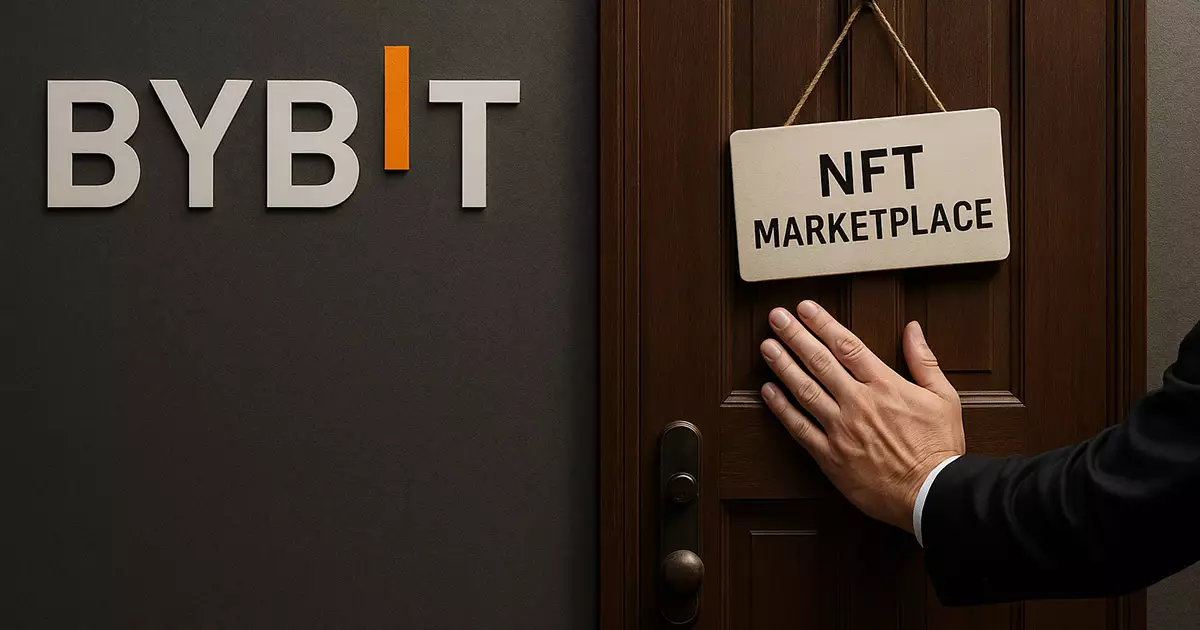Bybit’s recent decision to close its NFT Marketplace, along with the Inscription Marketplace and Initial DEX Offering (IDO) product pages, marks a significant event in the volatile world of digital collectibles. With the shutdown scheduled for April 8, 2024, and an ominous requirement for users to transfer their assets from Bybit’s web3 wallets, the signs of decline in the NFT industry are emblazoned in bold. It’s not just Bybit; this closure exemplifies a broader trend of retreats by large players, suggesting that the NFT market is not merely cooling, but may be nearing its demise.
Crippling Market Statistics
The cold, hard numbers speak volumes: Data from DappRadar reveals that trading volumes for leading NFT collections have plummeted by over 95% since their euphoric peak in 2021. How did we fall so far? The number of active wallets involved in NFT transactions has collapsed from over half a million to fewer than 20,000 today. With total NFT sales in the first quarter of 2024 decreasing to a meager $1.5 billion—down from $4.1 billion just a year prior—it’s safe to say that the golden era of NFTs was an illusion powered by hype and speculation. March alone registered a staggering 76% decline in sales compared to the previous year, revealing an urgent need for reflection among stakeholders.
Institutional Withdrawals and Consumer Disillusionment
It’s not just the numbers that are alarming; the consistent exit of significant players also signifies an alarming retreat from the NFT space. Kraken shuttered its NFT marketplace recently, and even tech giants like LG Electronics have disbanded their NFT platforms. Such moves exemplify an unsettling pattern: institutional interest in NFTs is sharply waning. This mass exodus raises critical questions: What were once valuable assets are now a burden, leading to widespread disenchantment among consumers and investors alike.
Security Crisis as a Catalyst
Adding fuel to the fire is Bybit’s recent experience with a major security breach, purportedly orchestrated by North Korean hackers who made away with an estimated $1.4 billion in digital assets. This incident not only undermines user trust but also forces exchanges to reevaluate their operational focus amidst heightened security risks. The NFT marketplace, already struggling to maintain relevance, faces relentless scrutiny over the viability of its business model in light of these heightened security concerns.
Niche Survival Amongst a Sea of Failures
While the broader NFT sphere faces a gloomy fate, a few niche collections like Pudgy Penguins and Doodles have experienced an uptick in sales during this downturn. However, their successes don’t mask the overall market’s instability. It’s a bittersweet observation: while these niches flourish, the once-promising landscape of NFTs has morphed into a battleground of uncertainty, where the definition of digital ownership hangs in the balance.
Ultimately, Bybit’s pivot away from NFTs serves as a cautionary tale for an industry that has seen its promises swallowed by market realities. The glittering façade of digital collectibles has faded, revealing a raw picture of an ecosystem in crisis. As we delve into this evolving narrative, one must ponder whether NFTs were ever truly destined to revolutionize ownership, or whether they were merely a flash in the pan, ignited by speculation rather than inherent value.














